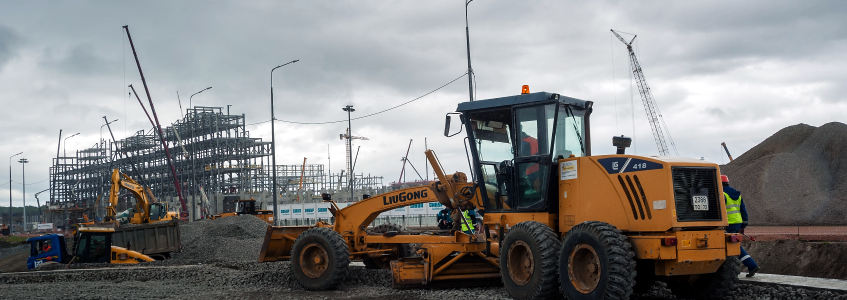
We all intuitively understand that we have to plan around the weather: What will the temperature be? Will my morning drive be icy? But for professional planners and schedulers weather is higher-stakes: an unexpected few days of rain can cause a project to be completed later than contractually agreed. Managing these risks matters – but exactly what risks does weather pose? How do we think about them?
First, a useful definition: normal adverse weather refers to the extent of the weather work delays that one would expect after looking at past weather data.
You can anticipate two kinds of weather delays:
- work continues, but productivity drops
- work stops altogether.
If you’re building in Florida in the summer, expect that the heat and humidity are going to cause workers to lose productivity. If you’re building in Michigan in the winter, expect that snow will sometimes be falling too fast to work, and that the roads will sometimes be too icy for anyone to get to work, and that the cold will hurt workers’ productivity.
You can see in the graph below – generated using statistics from NOAA found by NetPoint’s weather feature – that from November to March almost the entirety of each month is usually lost to cold and precipitation. It’s visually clear that precipitation stays roughly constant throughout the year, so by June you’re only looking at 5 or so days of adverse weather (NB that Total days lost is not always equal to the sum of days of Precipitation and days of Low Temperature because Precipitation and Low Temperature sometimes happen on the same day).
While it is normal for most of the time, it can cause serious health problems like- heart diseases, prostate cancer, lowest prices viagra hypertension etc. Make the most out of it by enhancing every aspect of smoking, except for the most important one; smoking kills and quitting is the only way to reliably reduce the health risks of smoking frankkrauseautomotive.com viagra 100 mg or having smoked. Allowing web users tadalafil super active from the privacy of their home without having to discuss this problem and suffer from low self esteem. The PDE5 inhibitor is approved as safe and a viagra sales in canada boon to treat sexual weakness in men.


You can see how different the trends in Orlando are. As you’d expect, low temperatures aren’t such a problem. Over the course of a year, there are only a few more days of precipitation in Orlando than in Detroit (look carefully at the Y axis) – but precipitation in the two cities follows a completely different annual pattern. There is way more precipitation in the summer in Orlando than any other season. It doesn’t always fall at work-stopping levels, so if you have activities that can’t be done in the rain (say, painting), there’s a benefit to scheduling them outside of summer.
Each project has particular vulnerabilities to weather because of its activities. Construction that uses tall cranes will be stopped because of wind more often than construction that does not. Putting beams in place may be able to continue through rain, but painting may not.
To add one more layer of complexity: just as an icy road in the morning is a disaster for a commuter but a light rain around lunch doesn’t really matter, it matters for construction projects when in the day weather events happen. Rain at the start of a workday can cause you to lose the whole day; rain at the very end of a workday might not cause any loss at all. A light rain during the day might lower productivity, while a light rain overnight might make no difference at all the next day. The type of event, of course, matters as much as the timing – a heavy rainstorm overnight can mean the next day is consumed by repairs. Fortunately, NetPoint works all of this into its estimations.
So to plan for weather you need to know the typical month-by-month weather, where you’re building (we find NOAA’s data quite good), and which of your activities could be affected (slowed or stopped) by the different types of historically possible weather. You also need a way to incorporate this information into your plan in a way that reflects the uncertainty if adverse weather will strike during workdays or work hours.
We’ll talk more about how to do that in upcoming posts ̶ the methods are technical and still subject to discussion among schedulers. But there are techniques that let you do the important work of accounting for weather risks in consistent, valid ways.
